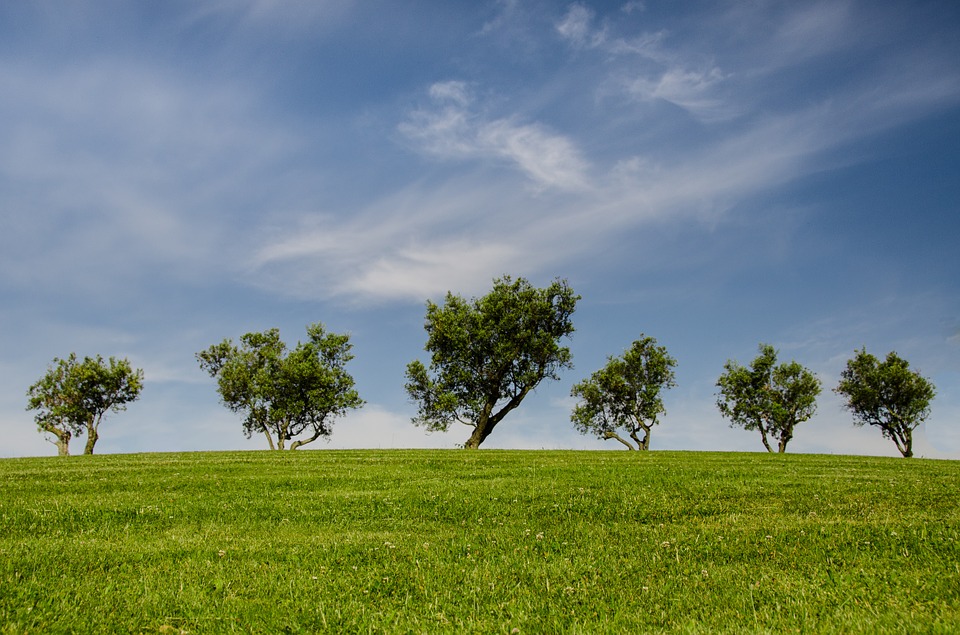Although most tree species can grow to be towering giants, they are often overlooked. People take trees for granted despite their importance to environmental and human health. Here are the top 6 reasons why planting and protecting trees is beneficial to humans and the environment.
Enhanced Air Quality
Humans and animals have trees to thank for improving the air quality here on Earth. Trees can filter our particulates out of the air and trap them in their leaves and bark. They can also absorb odors and pollutant gases such as nitrogen oxides, ammonia, sulfur dioxide and ozone. From a study published in the Environmental Pollution journal, researchers found that in 2010 there were 850 human deaths and 670,000 cases of acute respiratory symptoms prevented because of the presence of trees. Their numbers were based on the data that suggests approximately 17 tonnes of air pollution is removed by trees and forests.
According to the researchers, “in terms of impacts on human health, trees in urban areas are substantially more important than rural trees due to their proximity to people”. As part of development (in both urban and rural areas) it’s important to include green spaces in the planning process to ensure than humans and wildlife receive the benefit of enhanced air quality.
Carbon Sinks
Trees not only supply the Earth with clean oxygen, but also remove carbon dioxide (CO2) from the atmosphere. We live in a time where excess CO2 and other greenhouse gases are building up in the atmosphere and contributing to the issue of climate change. Trees are vital carbon sinks that help to offset the excess CO2 in the atmosphere; they can effectively remove and store CO2 for the benefit of the planet. According to TreePeople.org, “in one year, an acre of mature trees absorbs the amount of CO2 produced when you drive your car 26,000 miles.”
To help offset the effects of climate change, it’s important to protect old growth and mature forests, implement sustainable logging practices and plant trees in areas that have been logged.
Water and Flood Control
Tree roots keep soil in place and also act as a sponge. Having trees on hillsides and along waterways helps keep the slope stable and ecosystems intact. They help prevent water pollution by reducing runoff and preventing storm water with pollutants from reaching the ocean. Their roots also act as a natural filter when replenishing groundwater supplies.
During this time of climate uncertainty, trees play a vital role in keeping the ecosystems around waterways intact and helping to prevent water pollution.
Temperature and Wind Control
Trees are considered a great place for refuge when trying to escape from the sun and cool off. In cities with acres upon acres of asphalt streets, trees can play a vital role in keeping the city cooler. Tree coverage provides more shade throughout cities and reduces the amount of heat-absorbing roads and buildings that are exposed to direct sunlight. Home and building owners can benefit by having tree coverage near the buildings because it can provide shade and reduce cooling bills during the summer months. Also, in places where high winds are frequent and/or concerning for infrastructure, trees are an effective barrier.
Since tree coverage acts as a temperature and wind barrier, they are always important in terms of energy conservation. Keeping trees around and planting more trees can help increase the energy efficiencies of homes and buildings by reducing the amount of energy needed to heat and cool building. Energy demands are often linked to fossil fuels, but the presence of trees can help reduce our climate change impacts.
Wildlife Habitat
Trees provide wildlife with food, shelter, and refuge for mating and rearing young. They provide canopies for animals, such as birds, to thrive. Tree habitats support a wide range of wildlife and are vital for ecosystem health and biodiversity across the globe. But the despite the importance of trees for environmental health, unsustainable logging and land use changes are some of the biggest threats to wildlife and biodiversity.
Sustainable logging and development needs to become a priority to help preserve the Earth’s ecosystems. Protecting forests and planting more trees can also encourage biodiversity and allow wildlife to thrive.
Improved Mental Health
More and more studies have found that there is a strong correlation between nature and human health. According to PsychCentral, the thoroughness of these studies provide firm evidence that people with access to nature and greener neighborhoods “yield better cognitive functioning, more self-discipline and impulse control, and greater mental health overall”. By contrast, “less access to nature is linked to exacerbated attention deficit/hyperactivity disorder symptoms, higher rates of anxiety disorders, and higher rates of clinical depression”.
It’s important for urban planners to integrate more green spaces and neighborhoods in cities to provide people with better connections to nature and the associated health benefits. Planting trees is not only beneficial for environmental health, but can also “promote healthier, kinder, smarter, more effective, [and] more resilient people”.




